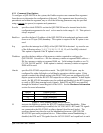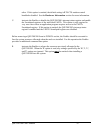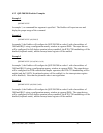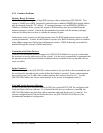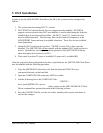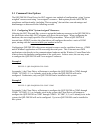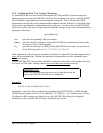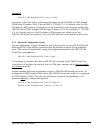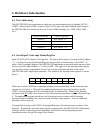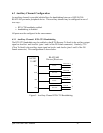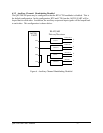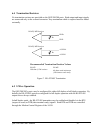
5.1.2 Configuring With "User Assigned" Resources
As mentioned in the previous section, allowing the OS/2 Plug-and-Play system to assign the
hardware resources to the QSP-200/300 is ideal for OS/2 programs but can be a problem if DOS
and/or Windows applications will be accessing the serial ports. This is because most DOS
applications write directly to the communications hardware and the Windows' Control Panel also
wants to know the hardware configuration of the serial ports. For this reason, the QSP-200/300
Client Driver allows the user to request specific hardware settings using a series of command line
arguments of the form
(port,address,irq)
port specifies the beginning COM port number
address specifies the base I/O address of the QSP-200/300 in hexadecimal and must reside
on an even 32-byte (20H) boundary.
irq specifies the interrupt level (IRQ) of the QSP-200/300 in decimal. irq must be one
of the following values: 3, 4, 5, 7, 9, 10, 11, 12, 14, or 15.
Each argument must be enclosed in parentheses and must be separated from other arguments by a
space on the command line. Within each argument, the parameters must be separated using a
comma (no spaces).
When a QSP-200/300 is inserted into a PCMCIA socket, the client driver will configure the card
as a series of COM ports, starting with the lowest available port number in the list.
IMPORTANT:
If the user specified resources are in-use by other devices in the
system, the QSP-200/300 will not be configured.
Example 1
DEVICE=C:\QSP-200\QSP200.SYS (3,100,5)
In example 1, the Client Driver will attempt to configure the QSP-200/300 as COM3 through
COM6 using I/O addresses 100-11F hex and IRQ 5. If COM3, 4, 5, or 6 already exists, or if the
I/O address or IRQ resources are already in use, the QSP-200/300 will not be configured.
Furthermore, only one QSP-200/300 can be installed in this system.
QSP-200/300 User's Manual 31




